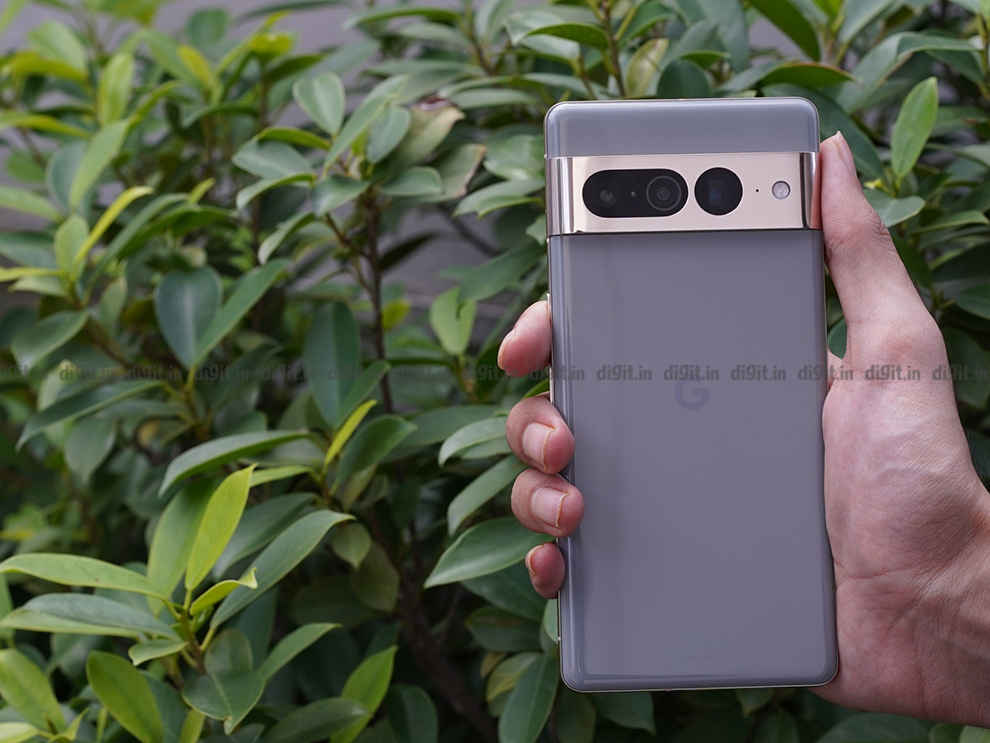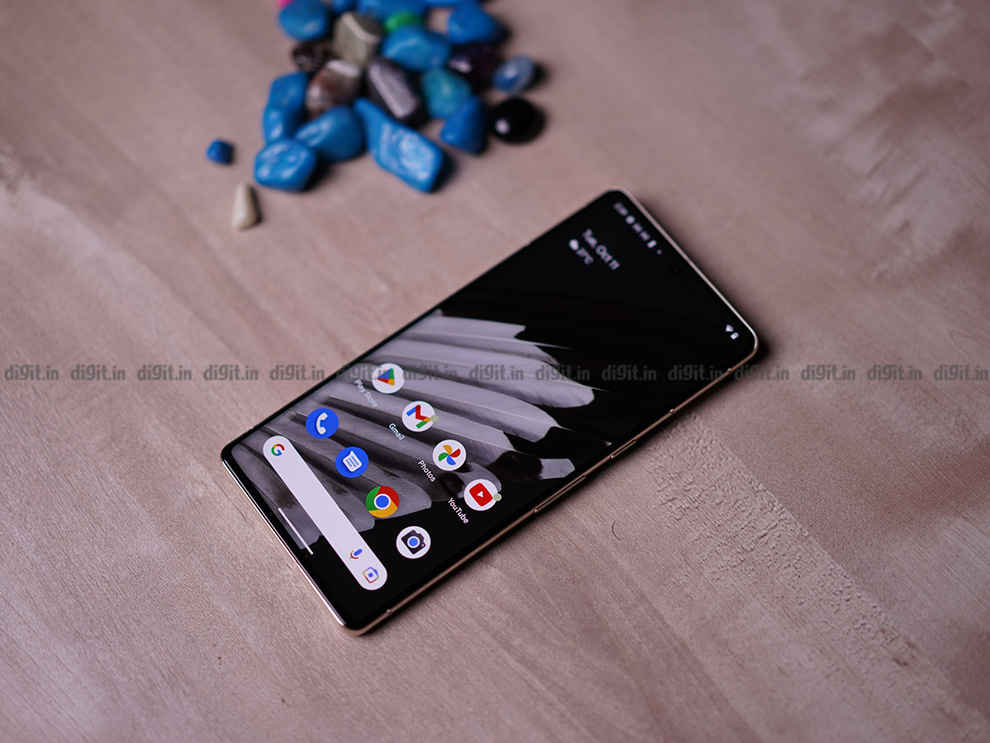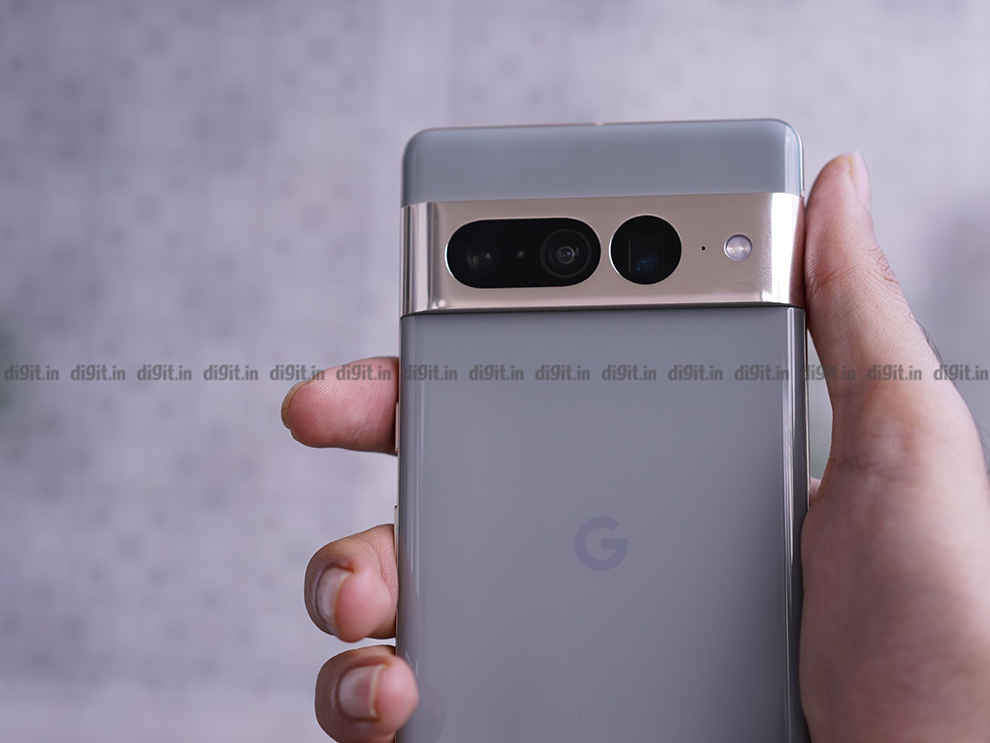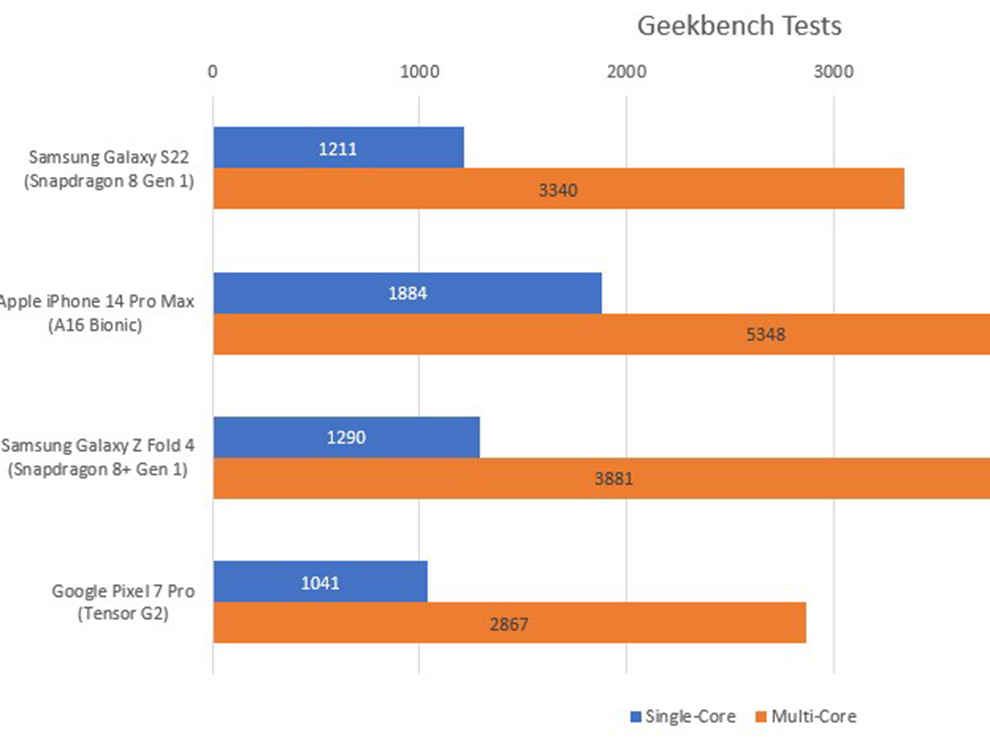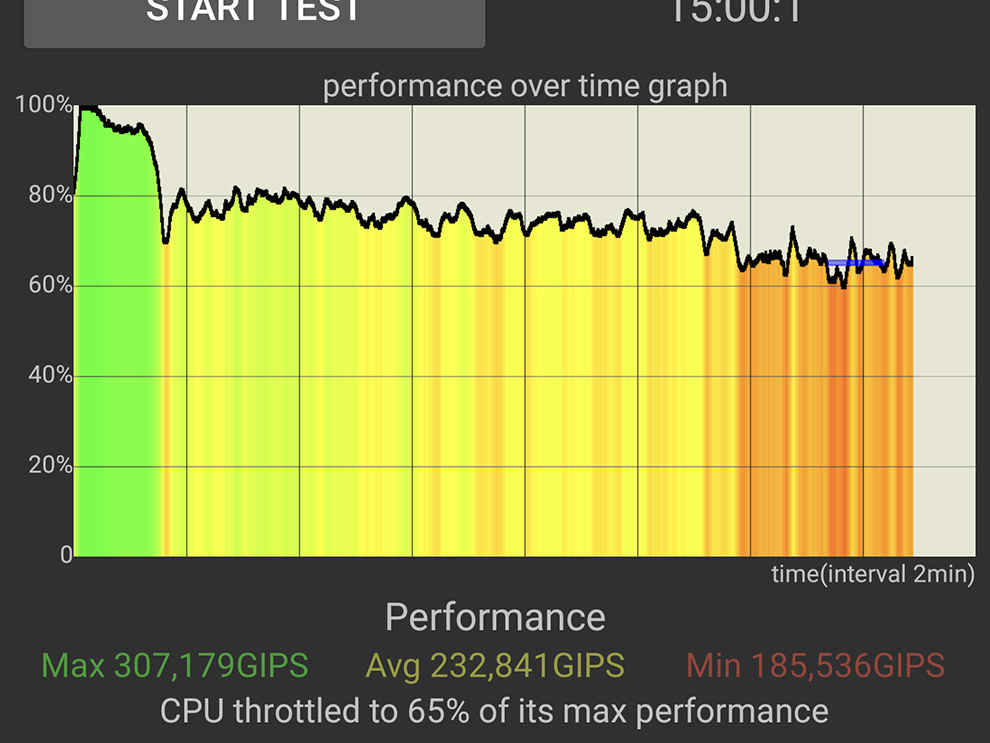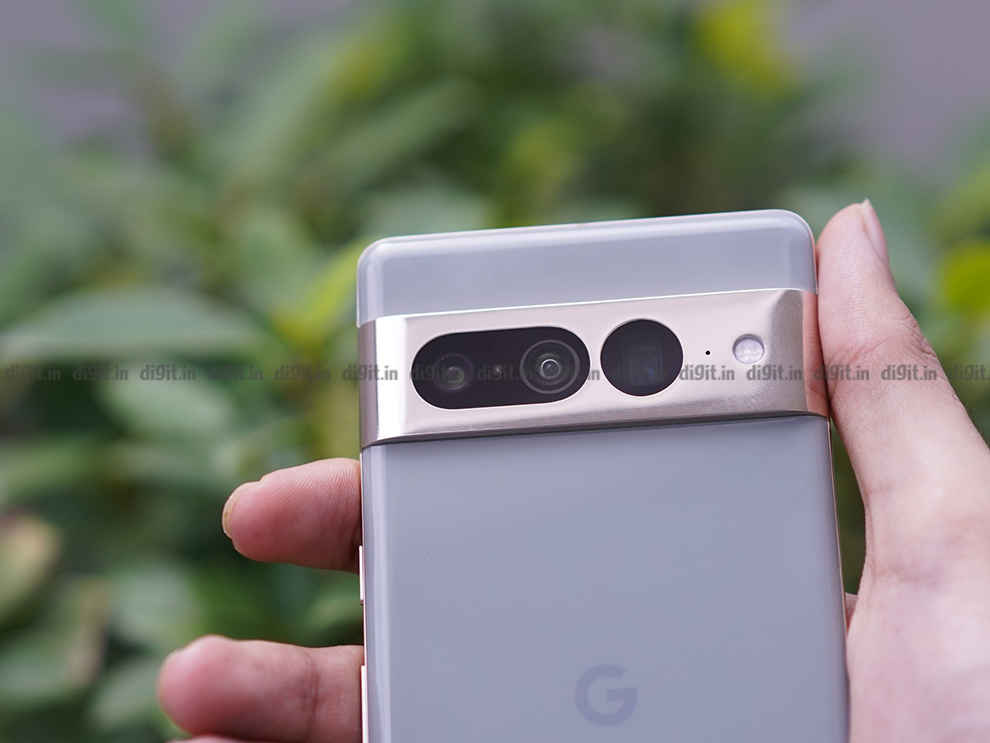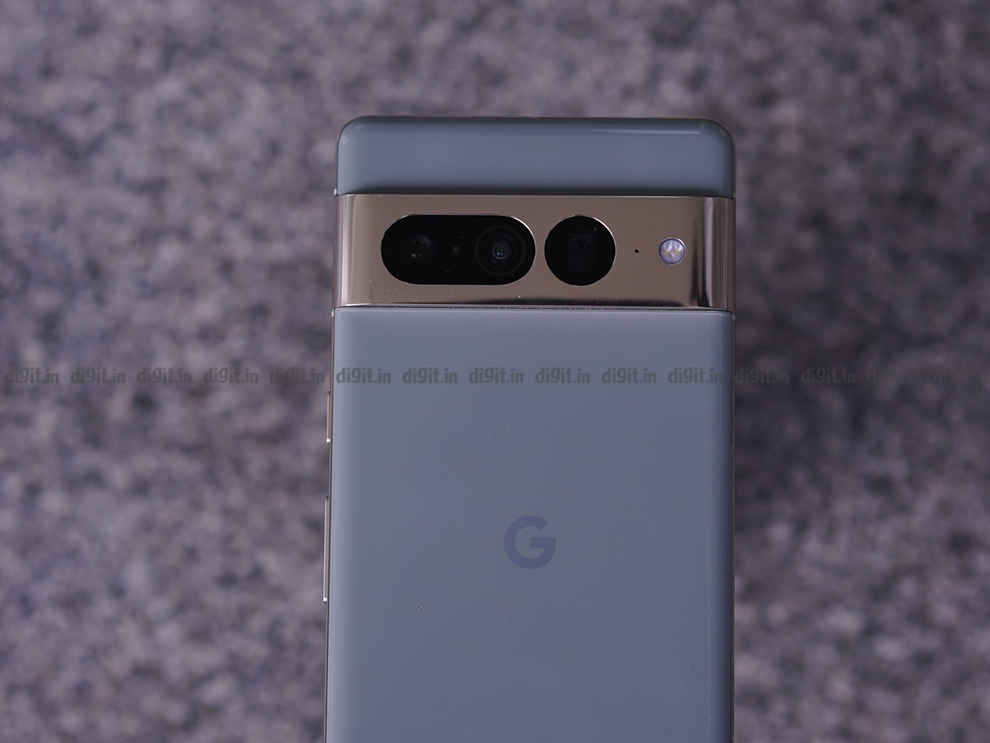Google Pixel 7 Pro Review : The near-perfect Android phone
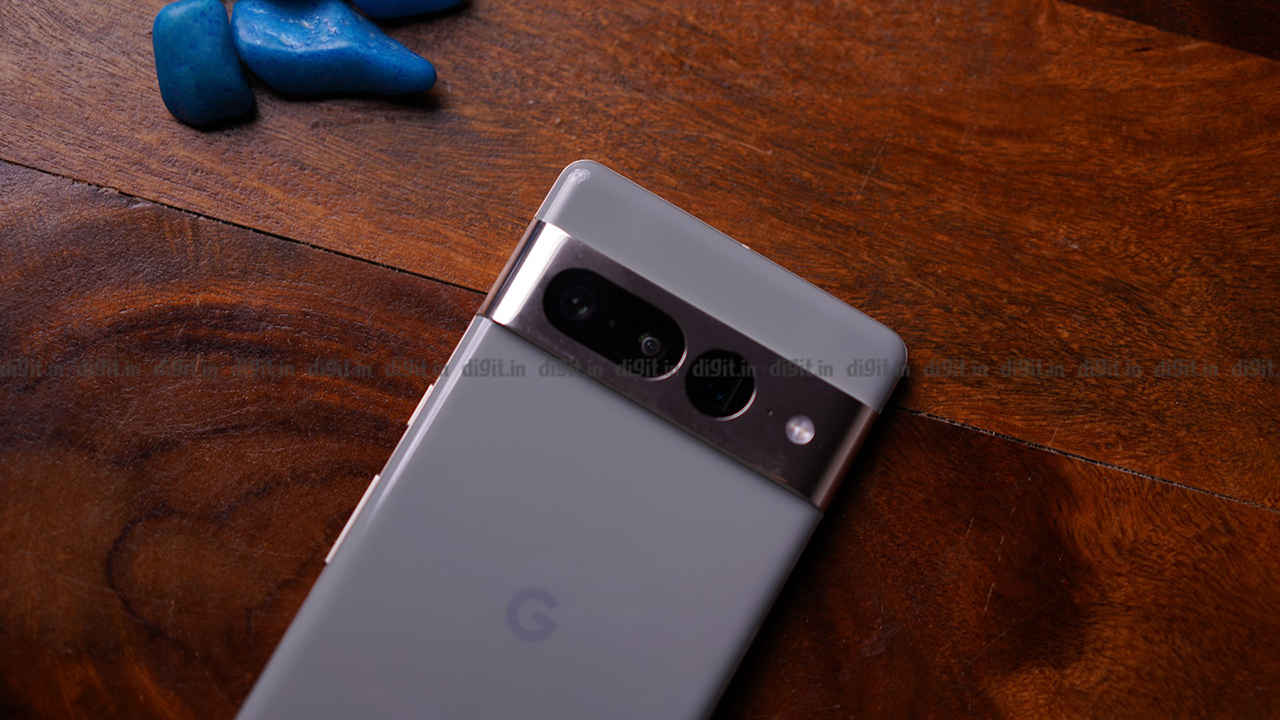
- Brilliant cameras, Gorgeous display, Powerful AI features
- Not for gamers, Pricey affair
The Pixel 7 Pro looks to be worth the money Google is asking for it. While it may not be a phone for gamers, it could very well be the perfect Android phone for every other premium segment user. It has the cameras, the display and even the design to wow most people out there, making it a very compelling offering.
After a long wait, Google has finally brought its flagship Pixel series of phones to Indian shores. The Pixel 7 and Pixel 7 Pro mark the company's return to the Indian market after its attempts with the Pixel 3 didn't exactly go according to plan. While the two new phones offer similar things, it is the Pixel 7 Pro that brings a few extras and stands out as Google's true challenger to the flagships from the likes of Samsung and Apple.
The Pixel 7 Pro offers incremental upgrades over last year's Pixel 6 Pro, but it does so in a way that makes this device a very good upgrade not only over its predecessor but also helps the Pixel series become more competitive against other existing flagships in the market. With its clean, stock Android approach, unique feature set and classy design, it gives premium segment buyers the option to look elsewhere if they aren't satisfied by the existing offerings in the segment. But is the Pixel 7 Pro worth your money? Let's find out in our review of the device.
Google Pixel 7 Pro: Design
The Pixel 7 Pro offers the same design language and almost the same design as the Pixel 6 Pro from last year. It is a distinctive design treatment that Google introduced with its flagship Pixels last year, and now the Pixel 7 Pro builds on it by making some crucial upgrades to this language.
As such, we get a phone that's metal and glass. However, unlike the Pixel 6 Pro, the entirety of the back of the phone is not glass this time around. Instead, this treatment has just been reserved for the back panel which is now supplemented with a metallic strip that runs across the camera housing of the device.
On the Pixel 7 Pro, Google has used a polished aluminium finish for this metallic strip that now is part of the frame of the phone, instead of being a standalone part of the device. This design decision makes the Pixel 7 Pro more sturdy compared to its predecessor. However, it also makes it more prone to catching scratches and smudges.
But overall, this does little to take away from the classy and clean look of the device, making the Pixel 7 Pro look like a thing of beauty when it's in your hand. The phone's dimensions and weight have also remained the same as the Pixel 6 Pro despite the increased use of metal in the making of the phone, which honestly is a piece of welcome news. The Pixel 7 Pro is also IP68 rated so you get water and dust resistance on this top-end Google Pixel phone.
Google Pixel 7 Pro: Display
Coming to the front, we have a large, 6.7-inch OLED display. This is the same as the Pixel 6 Pro and is in line with what other modern-day flagships offer. Apart from being big, this panel also offers all the other bells and whistles that you'd expect from a premium segment phone. As such, we get support for 1440p resolution and yes, 120Hz adaptive refresh rate.
Google is using Gorilla Glass Victus on this panel for screen protection. While this will protect the screen from light scratches and occasional falls, it is still recommended to use the phone with care and maybe even get a raised bumper cover to keep the display from damage.
Talking about the display some more, Google claims the panel can get very bright reaching a maximum of 1,500 nits. However, in our testing, we found it to peak at 1070 nits in the high brightness mode, which is good enough for not only gaming and using the phone under direct sunlight but also playing HDR content accurately on it.
This is a curved panel, which is accompanied by very little in terms of bezels and houses a centre-aligned punch-hole for the selfie camera. And as we found during our review, this gorgeous display does not disappoint in performance. It offers deep blacks and punchy colours, making it great for watching movies or consuming multimedia content on the device.
In my opinion, Google's also done a good job tuning the display to have no visible colour biases, and quite colour accurate when the display is set to the natural colour profile. However, when set to the Vivid profile, which is tasked to cover the wider DCI-P3 colour gamut, the colour accuracy of the display does go for a toss a little, as the phone starts to throw up slightly oversaturated colours.
Google Pixel 7 Pro: Performance
Underneath the hood, the Pixel 7 Pro hides Google's latest Tensor G2 chipset that is paired with 12GB of RAM and 128GB of storage. Interestingly, it is only in India that the phone maxes out at this configuration, with global markets also getting 256GB models of the device.
Talking about the SoC, this custom chip for Pixel phones has been brought to life using Samsung's latest 4nm fabrication process and is a serious upgrade over its predecessor. This new SoC is claimed to offer up to 60 per cent performance gains over the first-gen Tensor chip used to power the Pixel 6 series phones. Yet, as we found in our in-depth testing of the device, the Tensor G2 still fades in comparison to Qualcomm's Snapdragon 8+ Gen 1 and Apple's A16 Bionic SoC.
As a result, the benchmark scores of the Pixel 7 Pro were nothing to get too excited about, with the device throwing up lower scores than some premium-end phones we've tested in the past. For example, in AnTuTu, Geekbench and 3DMark WildLife, the performance of the Pixel 7 Pro were not up to our expectations, with the scores lower than those clocked by the Galaxy Z Fold 4 and the iPhone 14 Pro Max.
But high benchmark scores are not really what the Tensor G2 is all about. This new chip from Google is all about bringing to life Pixel-specific custom experiences and features including live translation and transcribing, and camera features such as Unblur and Cinematic mode. And all this while remaining extremely power efficient for the most part — 20 per cent more power efficient than the original Tensor according to Google's claims.
However, as we found out, the chip does not exactly do a brilliant job at handling heat and does suffer from throttling issues when pushed to the limit. This was exposed very clearly in a 15-minute run of CPU Throttling Test where we found the phone's chipset throttling to about 65 per cent of its performance after about 12 minutes of stress testing.
However, it's also true that away from the realm of synthetic benchmarks, the Pixel 7 Pro managed to offer good performance and an overall enjoyable gaming experience thanks to its rich feature set for most games.
For example, while gaming, the Pixel 7 Pro handled demanding titles like Call of Duty Mobile and Asphalt 9 Legends relatively well, but did show signs of frame dips during a session of Genshin Impact. Unlike the first two titles, the phone did not display consistent performance, with frame rates dropping in between. Performance for day-to-day tasks was better, as we noticed no signs of stress while running apps of daily use such as Twitter, Facebook and even when browsing the internet through apps like Chrome.
All of these experiences were of course enabled by Google's latest stock Android 13. With the Pixel 7 Pro, Google is committing to roll out future updates to the device faster than any other third-party Android phone out there, and also promising 5 years of security updates on the device.
Google Pixel 7 Pro: Battery
Now let's talk about the battery performance of the device. The Pixel 7 Pro uses a 5,000mAh cell to keep the lights on, which as we found out is good enough to keep the phone running for a day and some more on moderate use.
Since we are still not done testing the battery of the Pixel 7 Pro, we won't be giving you a verdict for the section just yet. However, what we will say for now is that the battery performance does seem promising, and better than most Android flagships out there. The Pixel 7 Pro also comes with support for 23W fast wired and wireless charging. This honestly feels a little dated for 2022.
Pixel 7 Pro: Cameras
Moving on to the cameras of the Pixel 7 Pro, the phone has a triple-lens set-up at the back, with a 50-megapixel primary lens, a 12MP ultra-wide lens and a 48MP lens for telephotos.
In terms of the lenses, it's only the telephoto lens on the device that's new, with the 50MP sensor and the 12MP sensor remaining unchanged from the previous generation pro-branded Pixel. Thanks to Google's software expertise, the 48MP-telephoto lens, delivers 5x optical zoom and 30x Super Res Zoom, rather than 4x optical and 20x Super Res functionality which we saw on the Pixel 6 Pro.
In our time using the device, the telephoto lens managed to click some usable shots, with the phone even going above the 5x optical zoom threshold without losing out on details. This is because at 10X zoom, the Pixel 7 Pro now activates super zoom which uses AI chops of the Tensor G2 to output optimised shots with more details than you'd expect at this magnification level.
At higher zoom levels, such as 15X, we did notice some level of detail loss, but, the results were still quite nice as the Pixel 7 Pro starts using the new Zoom Stabilization feature to click usable zoomed-in photos. This is also true for higher levels of zoom, where the Tensor G2 again kicks into action to not only help electronically stablise, but also output cleaner photos. All this of course was for daytime shots. In low light, the performance of this telephoto lens wasn't much to talk about.
This, however, was certainly not the case with the Pixel 7 Pro's primary lens. In our time with the device, we found this lens to churn out good shots when the camera is fed with a good amount of natural light. Living up to our expectations, the lens captured detailed shots with rich and accurate colours. These shots offer good dynamic range and even more improved results with HDR on.
The optimisations brought in by the ISP of the Tensor G2 chip definitely adds to the quality of these pictures, something that is more noticeable in low-light shots clicked by the lens. In low light, we clicked some really good shots that packed in a lot of detail and very little noise to ruin the frame. Suffice to say, Night Sight, powered by the Tensor G2 is just one of those features that we came to appreciate a lot as we used the device to click shots in darker environments. The performance was snappy and consistent, giving us nothing to complain about low-light photography from the primary lens.
The ultra-wide lens also proved to be impressive during the time we used the device. The results from this lens again were as expected, with no barrel effect in the ultra-wide shots. And much like the primary lens, the performance was consistent across shots clicked in low-light and well-lit environments.
But since this is a Pixel phone, the camera experience of the device is much more than the result of shots clicked using the three lenses on the phone. Rather, it is a mix of these photos, and some interesting AI-backed computational photography features. Of these, our favourite is the Photo Unblur feature which almost magically fixes blurry or out-of-focus photos by enhancing sharpness and details. And the interesting thing is this feature is available not just for shots clicked using the Pixel 7 Pro, but also for previously existing images in your photo gallery.
Another feature we really enjoyed using on the Pixel 7 Pro is the Magic Eraser. This feature brings the ability to remove undesired subjects from an already clicked picture. The results of this feature may not always be the most accurate, but it's definitely a welcome feature to have on your phone.
Google Pixel 7 Pro: Verdict
Now to the most important question: Is the Pixel 7 Pro worth your money?
Based on what we've seen of the Pixel 7 Pro till now, the phone does look like it's worth the money Google is asking for it. At Rs 84,999 (and a few discounts thrown into the mix) the Pixel 7 Pro does look like a decent deal at the moment. While it may not be a phone for gamers, it could be the perfect Android phone for every other premium segment user. It has the cameras, the display and even the design to wow most people out there, making it a very compelling offering.
But before we give a definitive verdict for the device, we'd like to give the Pixel 7 Pro a few more days under the sun, to see if it actually warrants a buying recommendation.
Google Pixel 7 Pro Key Specs, Price and Launch Date
| Release Date: | 23 Oct, 2022 |
| Market Status: | Launched |
Key Specifications
Screen size (in inches)
6.7
Rear Camera Megapixel
50
Battery capacity (mAh)
4926
Storage
128
Sushant Talwar
Sushant Talwar is a full-time foodie who reviews cool gadgets and binges on TV shows when he is tired of playing video games. He is also in love with football and thinks Manchester United is a religion View Full Profile

